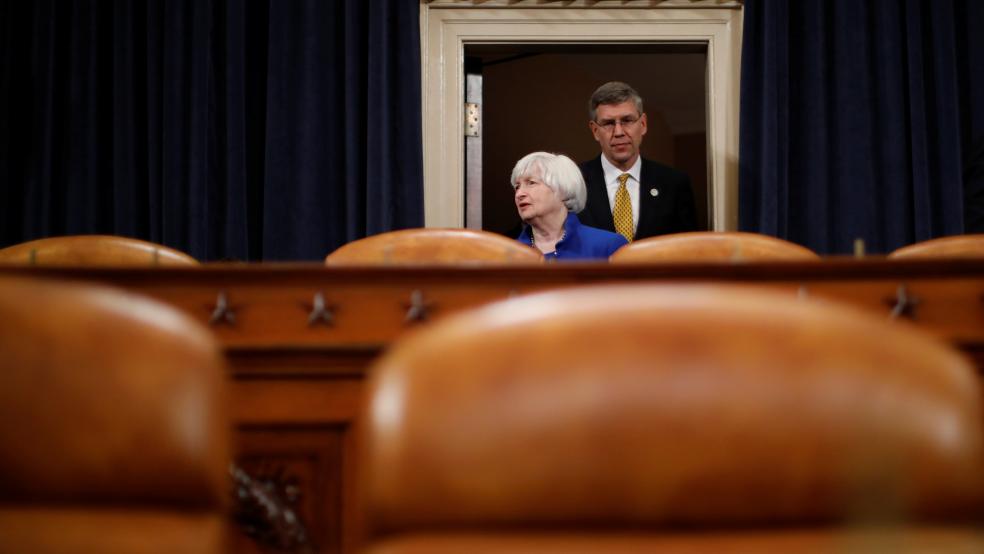Once again, the fate of the free world seemingly rests on a decision out of the Marriner Eccles building in Washington D.C., where on Sept. 17 Janet Yellen and her cohorts at the Federal Reserve will decide whether to raise interest rates for the first time since 2006.
If they do, the fear in some corners is that they will undo layers upon layers of credit leverage that have supported stocks, the global financial system and the economic recovery over the last seven years.
Related: The Politics of Economics and ‘Very Serious People’
The stakes were raised on Wednesday when the Fed's July policy statement confused more than clarified: Policymakers are pleased with progress in the job market but remain frustrated by tepid wage growth and still-low inflation. The latter is driven both by energy price declines and the demand-side drag from a slowdown in China and Europe.
If the Fed is moving closer to a rate liftoff in September, the market is still not convinced, with the futures market not looking for a move until December at the earliest.
The hinge upon which all this will turn is the U.S. dollar, which has destabilized foreign economies since it started rising last summer on anticipation of Fed tightening. Over this time, the greenback is up more than 22 percent.
Globally, according to the Bank for International Settlements, dollar-denominated debt to foreign non-bank borrowers has increased to $9 trillion, up from $2 trillion in 2000. Should the Fed tighten sooner than the market expects, the dollar will likely rise further, putting the squeeze on the real cost of repaying this debt.
Here's the crux: This cycle has been driven by increasing faith in the ability of central banks, whether the Fed or the People's Bank of China or the European Central Bank, to bolster markets and stave off any reckoning. The ECB has contained the situation in Greece by starting a sovereign bond-buying program and increasing its support to Greek banks. The PBoC has actively fought the rout in Chinese stock markets by increasing its liquidity support.
But a Fed-fueled tightening of dollar liquidity would leave corporate borrowers in Asia and Latin America without a domestic savior able to print dollars at will.

Here at home, a rate liftoff sooner than the market expects could throw stocks into their first correction of 10-plus percent since Bernanke started QE3 in 2012. The higher cost of capital could cascade through the bond market, corporate junk debt and eventually into equities, curtailing the flow of debt-funded share buybacks.
Related: Will the Rout in Junk Bonds and Commodities Crush Stocks, Too?
Given those risks, Wall Street is doing its best to read any signals Yellen may be dropping.
Alberto Gallo, head of macro credit research at RBS, believes traders are bracing for something similar to what happened two years ago when the Fed surprised by holding off on its “taper” of the QE3 bond purchase stimulus program. The market is already pricing in a 25 percent chance of any rate hike being delayed until 2016. At the start of this year, the market put the likelihood of a 2016 liftoff at 12 percent. "A rate hike could be delayed by slowing global growth, fears of a stronger [U.S. dollar] and Chinese financial volatility spreading to global capital markets," according to Gallo.

With futures only pricing in a one-in-three chance of a September rate hike, another market tantrum isn’t out of the question and, according to Gallo, would likely hit U.S. high-yield and emerging market corporate credits the hardest.
Investors have already sold off U.S. high-yield and emerging market government debts, but are sticking with emerging markets bonds. For investors, now's the time to reconsider any exposure to this area.






